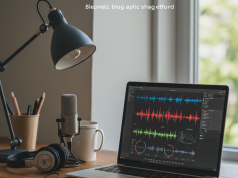The digital marketing world faces a constant dilemma: how to gather enough customer data to personalize experiences without creating friction that drives people away.
Enter progressive profiling.
What Is Progressive Profiling?
Progressive profiling is the strategic approach of collecting customer information gradually over time, rather than all at once.
Instead of bombarding visitors with lengthy forms asking for their life story, you collect small bits of information at different stages of the relationship.
Each interaction becomes an opportunity to learn something new about your prospect, building a comprehensive profile organically.
Why Traditional Forms Are Failing Us
We’ve all abandoned a form because it asked for too much information too soon.
Research from Baymard Institute shows that 26% of online shoppers abandon their purchase because the checkout process is too long or complicated.
The same principle applies to marketing forms. Each additional field reduces conversion rates by approximately 4%.
When we demand too much information upfront, we create unnecessary barriers between our audience and our content.
How Progressive Profiling Enhances the Inbound Experience
True inbound marketing is about attracting people with value, not interrupting them with demands.
Progressive profiling aligns perfectly with this philosophy by:
Creating a lower barrier to entry for first-time visitors.
Building trust before requesting more personal information.
Demonstrating respect for the visitor’s time and privacy.
Providing increasingly relevant experiences as you learn more.
Visit our guide to inbound marketing fundamentals to understand how progressive profiling fits into a comprehensive strategy.
Implementing Progressive Profiling: A Step-by-Step Approach
Start with the Essentials
For first-time interactions, ask only for what you absolutely need—typically just an email address.
This minimizes friction while still opening the door to further communication.
Map Information to the Buyer’s Journey
Plan what information you’ll collect at each stage of the relationship.
Early stage: Basic contact information and broad interests.
Middle stage: Professional details and specific challenges.
Late stage: Budget considerations and decision-making timelines.
Use Smart Forms Technology
Implement forms that remember what information you’ve already collected.
When a known visitor returns, your forms should automatically display new questions instead of repeating old ones.
Provide Clear Value Exchanges
Each time you ask for new information, ensure you’re offering something valuable in return.
Early requests might be exchanged for educational content, while later requests could unlock personalized consultations or exclusive resources.
Real-World Progressive Profiling in Action
Imagine Sarah visits your website for the first time and downloads a guide by providing just her email address.
Two weeks later, she returns to access a webinar. Your form already knows her email, so it asks for her job title and company size instead.
A month later, when Sarah registers for a product demo, you collect information about her specific challenges and purchasing timeline.
By this point, you’ve built a comprehensive profile—all without overwhelming Sarah with long forms or irrelevant questions.
Balancing Data Collection with User Experience
According to McKinsey & Company, personalization can deliver five to eight times the ROI on marketing spend.
But this personalization requires data.
Progressive profiling offers the perfect balance: collecting the data you need while respecting the user experience.
The key is to only collect information you can actively use to improve the customer experience.
If you can’t explain how a piece of information will benefit the customer, don’t ask for it.
Common Progressive Profiling Mistakes to Avoid
Asking for the Same Information Repeatedly
Nothing frustrates users more than being asked for information they’ve already provided.
Ensure your systems are properly integrated to prevent this common pitfall.
Collecting Data Without a Plan
Before implementing progressive profiling, determine exactly how you’ll use each piece of information to enhance the customer experience.
Waiting Too Long Between Interactions
If you space out your data collection too much, you risk having incomplete profiles for too long.
Strike a balance between patience and progress.
Failing to Explain the Value Exchange
Always make it clear why you’re asking for information and how it will benefit the user.
Measuring Progressive Profiling Success
Success isn’t just about how much data you collect—it’s about the quality of relationships you build.
Track form completion rates before and after implementing progressive profiling.
Monitor increases in return visitor engagement.
Measure the impact of personalized experiences on conversion rates.
Assess the quality of leads generated through progressive profiling.
Looking Forward: Progressive Profiling in a Privacy-First World
As privacy regulations tighten and third-party cookies crumble, first-party data becomes increasingly valuable.
Progressive profiling offers a transparent, consent-based approach to data collection that respects user privacy while still gathering the insights you need.
By focusing on building relationships rather than just databases, progressive profiling ensures your marketing remains effective even in a more privacy-conscious landscape.
Final Thoughts
Progressive profiling isn’t just a technical implementation—it’s a philosophy that respects the gradual development of customer relationships.
By collecting information incrementally and always providing value in return, you create a more natural, less intrusive experience.
The result? Richer customer data, higher conversion rates, and stronger relationships built on mutual value exchange.
Remember: The goal isn’t to collect as much data as possible, but to collect the right data at the right time to deliver experiences that truly resonate with your audience.




